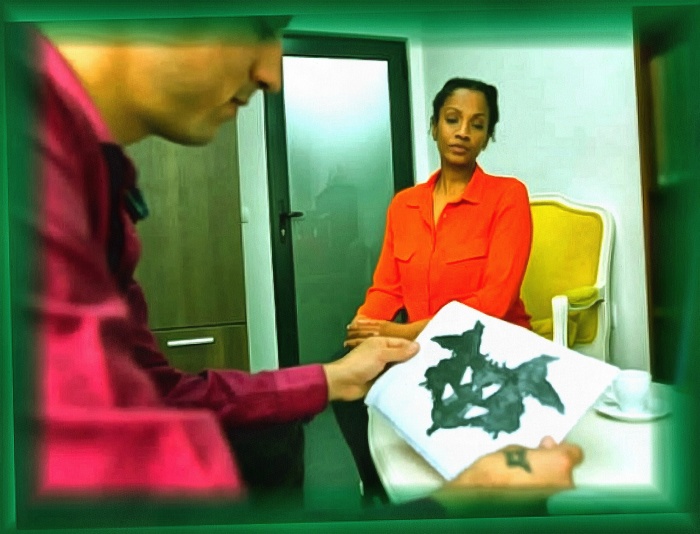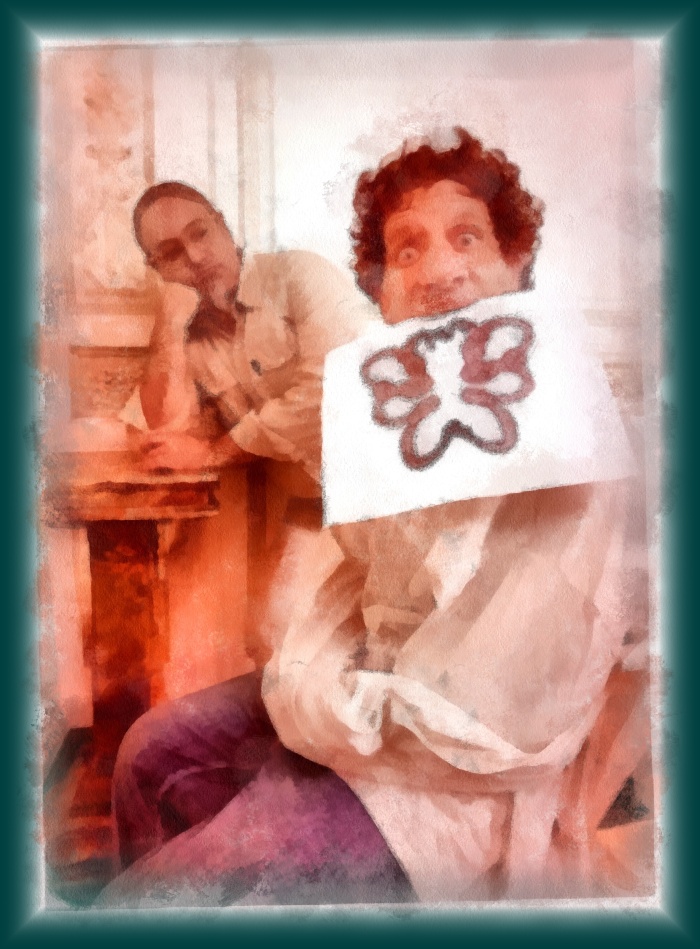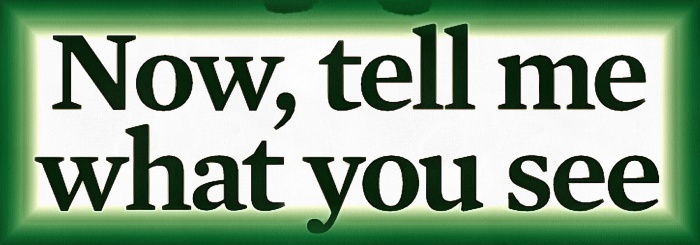Hermann Rorschach inkblot test
Очередной выпуск моего авторского Блога.
Let's talk about an interesting bar in the city of Prague, where instead of the menu visitors are offered pictures with inkblots...
Блог #79 | And the menu is full of inkblots...

Now, tell me
what you see
Inkblots have an enduring fascination
as a psychoanalysis tool, especially
when out drinking in Prague.
Inkblots are slightly useful for understanding
how people perceive and think about their lives.
Prague has palaces, the Charles Bridge, and the Celestial Clock, but if you are a particularly nerdy (and boozy) tourist, you can make a reservation at the Anonymous Shrink’s Offi ce.
The entrance isn’t immediately obvious unless you know what you’re looking for.
I'll tell you something very interesting next!
A sign outside a bourbon bar looks like an inkblot of a face.
It's a very entertaining bar.

Inside, if you press the red button next to a photo of a masked person, part of a brick wall will swing open and you’ll be directed to a private cocktail bar where you select your drinks, not from a menu, but by choosing from a selection of ambiguous pictures.
This is such an entertaining psychological experiment...
Let your unconscious decide …
As the name suggests, this bar is themed around psychoanalysis – the branch of mental inquiry introduced and popularised by Sigmund Freud in the 1890s and early 1900s.
To recap, Freud reckoned that a lot of our here-and-now behaviour and mental distress refl ect what’s bubbling away in our unconscious.
And Sigmund Freud knew what he was talking about.
Among other things, he talked about the problems of alcohol addicts.
Because our unconscious is, well, unconscious, he developed a certain set of tools to get behind the veil and access what we’re not conscious of: word association, dream interpretation and suchlike. Where do inkblots come in?
Just like a cloud may look like a walrus riding a unicycle (or something else entirely), diff erent people might see diff erent things in the image you make when you drop some ink on a piece of paper, fold it, and squish it.
The general idea is that a trained expert can make inferences about someone’s personality and unconscious, based on how they interpret an inkblot.

Freud doesn’t get to claim this “projective test” as his own, though.
That honour goes to Hermann Rorschach, a Swiss medical doctor and psychoanalysis enthusiast.
If you google Rorschach, pictures of a surprisingly young face pop up.
A rather good-looking young fellow.
I can imagine a Fight Club-aged Brad Pitt being shoulder-tapped to play him.
That’s because Rorschach died a young fella in 1922, at the age of 37.
The internet tells me he died of peritonitis, attributed to a ruptured appendix.
And just like Jim Morrison, he’s become more famous aft er his death than in life.
Only a handful of years aft er graduating as a doctor, Rorschach learnt of the work of fellow Swiss psychiatrist Szyman Hens.
If it weren’t for Rorschach, Hens would have left nary a blot on the internet.
Rorschach came across Hens’ description of clients’ fantasies and fantastic interpretations inspired by looking at inkblots.
Rorschach tested a set of 15 inkblots, some monochrome, some black and red, with more than 300 psychiatric patients and healthy subjects.
He argued in his 1921 book, Psychodiagnostics, that people project their unconscious, their personalities and societal pressures in how they interpret these splots of ink on paper.
Just as Freud argued that our adult behaviour has roots in our childhood, numerous sources say young Rorschach earned the nickname “Inkblot” as a child, because he enjoyed klecksography – a game involving making inkblots.
Sadly, the core idea – that inkblot-inspired interpretations give psychoanalysts privileged access to what’s bubbling below – is considered by many to be, well, bunkum.
Although quite popular, the test had a rough time in the scientifi c literature and also in courts of law, where its reliability was questioned.

In 2013, however, a systematic review of research using the test concluded that inkblot interpretations are slightly, but reliably, useful for understanding how people perceive and think about their lives.
Though not their personalities. Rorschach’s legacy continues.
In popular media, a very contemporary example is the graphic novel vigilante called Rorschach from Alan Moore’s Watchmen series.
In this, and the movie based on it, the character wears a mask bearing an inkblot – just like the bar staff at the Anonymous Shrink’s Offi ce.
Rather surprisingly, I can’t fi nd any indication that any actor has played Rorschach himself in an actual fi lm.
I’m sure it’s only a matter of time.
Проект Fixed Matches Betting
© 2015 - This is a consulting website by Ruslan Bekhterev